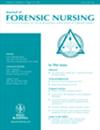西班牙青少年对性别暴力的看法
IF 0.9
4区 医学
Q3 CRIMINOLOGY & PENOLOGY
引用次数: 0
摘要
摘要背景青少年性别暴力是一个全球性问题。在公共医疗领域,护理专业人员发挥着重要作用。目的本研究旨在确定青少年对性别暴力的认识、信息和信念,并确定他们的教育需求。参与者和设定数据来自西班牙社会学研究中心和政府性别暴力办公室2013年进行的一项研究。样本包括698名15-19岁的青少年。方法这是对数据调查的二次分析。遵循《加强流行病学观察研究报告》指南。分析了社会形态变量和七个感兴趣的主题:性别不平等、亲密关系、虐待的定义、虐待的识别、对妇女虐待案件的认识以及非正式和正式的支持网络。结果研究结果表明,青少年消息灵通,了解非正式和正式的支持网络,使用“尊重”一词,识别虐待行为并认为其不可接受,并认为媒体报道有助于揭露性别暴力。在性别、社会阶层或教育程度上没有发现显著差异,他们对浪漫爱情的看法保持不变。结论研究人员得出结论,在西班牙,青少年对性别暴力的认识受到环境和文化因素的强烈影响,因为该国普遍存在性别暴力和亲密伴侣暴力。学校或更广泛的社区的护理专业人员提供的健康教育等正式干预措施可以对青少年健康产生积极影响。初级保健护士应该利用这些发现来支持为年轻人制定健康促进计划。本文章由计算机程序翻译,如有差异,请以英文原文为准。
Perceptions of Gender Violence in Spanish Adolescents
ABSTRACT Background Gender violence among adolescents is a global problem. In the context of public healthcare, nursing professionals play an important role. Objective The aim of this study was to determine awareness, information, and beliefs regarding gender violence in adolescents and identify their educational needs. Participants and Setting Data from a study conducted by the Spanish Centre for Sociological Research and the Government Office for Gender Violence in 2013 are used. The sample contained 698 adolescents aged 15–19 years. Methods This is a secondary analysis of a data survey. Strengthening the Reporting of Observational Studies in Epidemiology guidelines are followed. Sociodemographic variables and seven topics of interest were analyzed: gender inequality, intimate relationships, definition of abuse, identification of abuse, awareness of cases of abuse in women, and informal and formal support networks. Results The results show that adolescents are well informed, are aware of informal and formal support networks, use the word “respect,” identify abuse and consider it unacceptable, and believe media coverage is useful in giving visibility to gender violence. No significant differences were found in gender, social class, or education, and their idea of romantic love remains intact. Conclusions The researchers conclude that, in Spain, adolescents' awareness of gender violence is strongly influenced by environmental and cultural factors, because of the prevalence of gender and intimate partner violence in the country. Formal interventions such as health education provided by either nursing professionals in schools or the broader community can have a positive effect on adolescent health. Primary care nurses should use these findings to support the development of health promotion programs for young adults.
求助全文
通过发布文献求助,成功后即可免费获取论文全文。
去求助
来源期刊

Journal of Forensic Nursing
NURSING-
CiteScore
1.50
自引率
10.00%
发文量
120
期刊介绍:
The Journal of Forensic Nursing (JFN) the official journal of the International Association of Forensic Nurses, is a groundbreaking publication that addresses health care issues that transcend health and legal systems by articulating nursing’s response to violence. The journal features empirical studies, review and theoretical articles, methodological and concept papers, and case reports that address the provision of care to victims and perpetrators of violence, trauma, and abuse. Topics include interpersonal violence (sexual assault, abuse, intimate partner violence); death investigation; legal and ethical issues; forensic mental health nursing; correctional nursing; and emergency and trauma nursing.
 求助内容:
求助内容: 应助结果提醒方式:
应助结果提醒方式:


